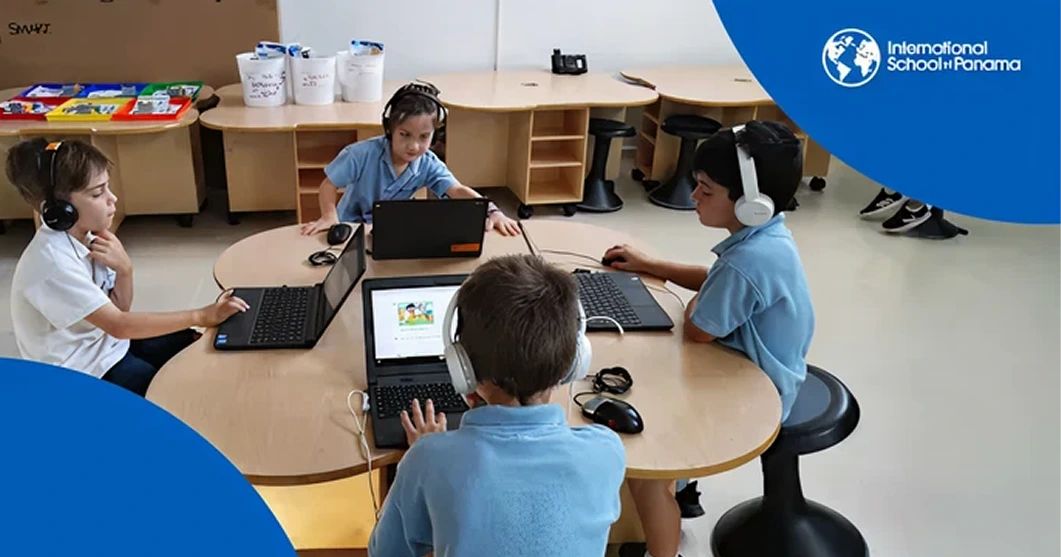Over the past few years, virtual learning has become an integral part of education, offering flexibility and new ways to learn. This model has transformed teaching and learning practices by implementing distance learning technologies to facilitate social communication and interaction between students and instructors.
Achieving success in a virtual environment requires combining organizational tools, interactive resources and support systems to help learners stay engaged and on track. Since technology advances at a rapid rate, it is important to keep up to date on what educators are incorporating to make classes more didactic and interactive. Here’s a look at the essential tools that can be used during these virtual learning sessions.

The different types of virtual learning tools
There are different types of distance education tools,
as they serve different purposes. This variety is very valuable since each tool offers unique features that contribute to effective learning. While some are good at improving communication, others like games can deepen students’ understanding of specific topics.
So every tool plays a role in making education more engaging and accessible. These are the four main types:
Communication tools
Teachers have access to various communication methods like email, discussion boards, chat rooms, classroom websites, and video calls. Many platforms, such as Zoom and Google Classroom, include several of these features to facilitate seamless interaction between teachers and students.
Learning Management Systems (LMS)
LMS are software applications built to create, organize, and deliver online courses, while also tracking student progress.
They provide a consistent way to teach and manage student’s performances, making online education both efficient and engaging.
Digital learning games and resources
Games are a favorite activity for kids, so incorporating educational games can be an effective way to encourage learning.
There are multiple websites that bring together different games for studying depending on the specific subject.
On the other hand, many teachers turned to diverse digital resources to keep students engaged during the pandemic while they shifted to virtual classes. Digital whiteboards and organization apps are a good example of this.

The different types of virtual learning tools
1. A dedicated workspace
We know, this isn’t really a digital tool, but we want to start our list by emphasizing the importance of creating a designated studying space. This can make a big difference in a student’s focus and productivity, and it doesn’t have to be a fancy setup; it could be a corner in the bedroom or a small desk in a quiet part of the home.
The key is to make this space comfortable and free from distractions. Having a desk, ergonomic chair, and good lighting can help students stay focused, while organizing supplies (like notebooks, pens, and planners) in the same space can promote better study habits.
Parents or guardians can help by setting up a space that limits interruptions, ensuring children have a place where they feel ready to concentrate.
2. Video conferencing platforms
Classic video conferencing tools like Zoom, Microsoft Teams, and Google Meet are essential for attending classes, group discussions, and teacher consultations. Familiarizing students with these platforms: how to join meetings, mute/unmute, use chat functions, and share screens, can empower them to participate more fully in virtual classrooms.
3. Learning management systems (LMS)
As we mentioned before, LMSs serve as digital environments to organize and deliver teaching content. Platforms like Google Classroom SEQTA, and Seesaw serve as central hubs for virtual learning. Through these platforms, students can access course materials, complete assignments, and communicate with teachers. A well-organized LMS simplifies students’ ability to track assignments, view upcoming deadlines, and monitor grades.
4. Notion and Trello
Without the structure of a physical school day, time management can be challenging. Tools like Trello and Notion help students organize their schedules, track assignments, and set reminders. Notion, for example, is excellent for scheduling classes and assignment deadlines, while Trello’s card system is useful for organizing large projects.
These apps teach students to prioritize tasks, break them down into manageable steps, and develop good habits for staying organized. Parents can encourage the use of these tools by sitting with their child at the beginning of each week to plan upcoming tasks and deadlines. Little by little, students can gain autonomy on this task, interiorizing the importance of keeping up with an agenda.
5. Focus@will and Freedom
Staying focused can be challenging when learning virtually, especially with online distractions. Apps like Focus@Will combine music and neuroscience to boost productivity. And website blockers like Freedom can help students manage distractions.
There are also Pomodoro timer websites that encourage students to work for set intervals (e.g., 25 minutes) followed by short breaks. This technique can improve concentration and prevent burnout. Productivity tools help students learn to manage their time and energy effectively, an essential skill for virtual learning and daily life.
6. Digital note-taking tools
Taking organized notes is essential for processing and retaining information. Digital note-taking tools like Microsoft OneNote, Evernote, and Google Keep allow students to capture, organize, and even share their notes. With features like cloud storage and the ability to organize notes by subject or topic, these tools make it easy to keep track of lessons and study materials.
Using digital notes also allows for multimedia integration. Students can insert images, videos, or links related to the topic, creating a more interactive and comprehensive studying resource.
7. Messaging
In virtual learning, maintaining communication with teachers and classmates is essential. Email and instant messaging platforms like Google Hangouts enable students to reach out for help, work on group projects, and stay connected with peers.
Clear guidelines on when and how to use these tools professionally can be helpful. Encouraging students to check emails or messages daily ensures they stay updated on assignments and announcements.
8. Online research resources
Access to reliable information is crucial for completing assignments, projects, and studies. Websites like Khan Academy, Coursera, and Google Scholar are excellent at offering valuable supplemental learning materials.
Teaching students how to use these resources, verify the reliability of information, and cite sources correctly promotes academic integrity and deepens their understanding of subjects.
Parental and teacher support
Parental involvement and teacher support play a vital role in virtual learning success. Parents can help by checking in regularly with their children, ensuring they understand assignments and aren’t feeling isolated. Teachers, on the other hand, can provide feedback, monitor progress, and encourage students to ask questions or seek help when needed.
At ISP, we are aware of the importance of empowering students to thrive in a globally networked society, so we foster enriched virtual learning practices by giving all students a student email that they can use to communicate with teachers and peers. We also implement LMSs like SEQTA to boost an integrated active learning process. Finally, we offer GOA (Global Online Academy) courses to HS students, encouraging our community to be qualified for navigating the ever-changing digital world.

Success in virtual learning depends on equipping students with tools that promote focus, organization, and well-being.
Each tool plays an essential role in creating a supportive, effective virtual classroom experience. By integrating these resources and encouraging consistent routines, students can thrive in their virtual learning environments and develop skills that will benefit them far beyond school.

